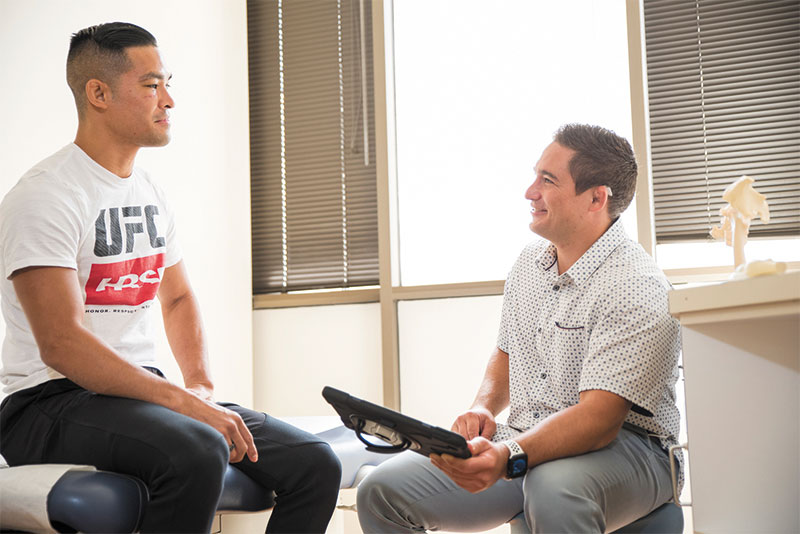Utilizing Robotics In Orthopedics
 BY DR. PAUL NORIO MORTON, orthopedic surgeon
BY DR. PAUL NORIO MORTON, orthopedic surgeon
When I graduated from Kea‘au High School and started at Antioch College in Ohio, I wasn’t quite sure what I wanted to be “when I grew up.” While double-majoring in chemistry and biomedical sciences, I signed up as a volunteer firefighter, and the feeling I got when helping in rescue operations convinced me to become a doctor.
I returned home to go to medical school at University of Hawai‘i John A. Burns School of Medicine and chose to specialize in orthopedics because it combined my love of helping people, sports and technology. Utilizing the latest robotics technology in orthopedic surgery has become a passion, which is why some of my patients nicknamed me “The Robot Doc.”
I cover all areas and ages in orthopedics, and specialize in hips and knees. Did you know that about 20% of patients who have gotten total knee replacements are not satisfied with the results?
In joint replacement surgery, we are always looking for ways to improve our surgeries, and robotic knee replacements are the new revolution in orthopedic surgery.

Dr. Paul Norio Morton (right) with professional UFC fighter Tyson Nam.
PHOTOS COURTESY DR. PAUL MORTON
Traditionally, carpentry-style jigs were used to fashion the bone in your knee to the knee replacement implant. These guides follow strict alignments and make generalizations about patient anatomy, and can only get your implant position within 3 degrees and only 80% of the time on average. Robotic-assisted knee replacements, on the other hand, place the knee replacements in much more accurately — within 1 degree, 100% of the time — and are customized to your anatomy. More accuracy with robotic surgery means that the everyday stress on your knee replacement will be evenly distributed over the implant surfaces, leading to less wear over time. Less wear allows for longer-lasting implants.
Customization of the implant to your knee is also crucial to successful knee implant outcomes.
With robot assistance, we can accurately measure the tension in your ligaments with your knee extended or flexed during knee replacement surgery.
This measurement allows for precise customization of how we position your implants to balance your knee. Many patients have a knock-kneed or bow-legged appearance. Robotic assistance can help us guide our implant position to help you achieve a straight knee and an implant customized to your anatomy.
I believe robotic surgery is more precise, less invasive, has fewer complications and will get you back out there feeling pain-free faster. But, although I use the latest technology, I still believe in good, old-fashioned, friendly, personalized care.
I always want my patients to feel special and to know their individual care and treatment are really important to me.
For information, call 439-6201 or visit doctormorton.com.





